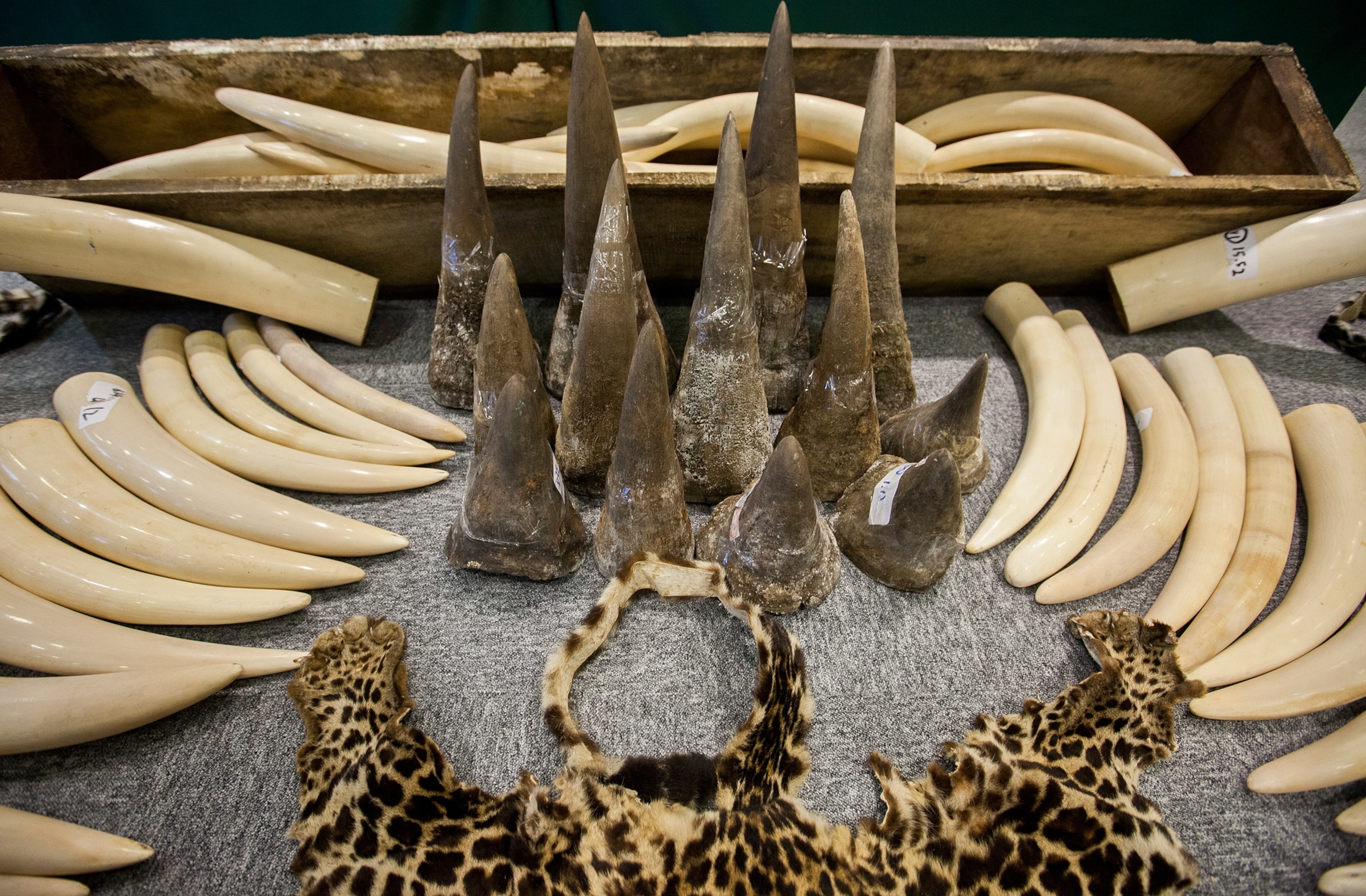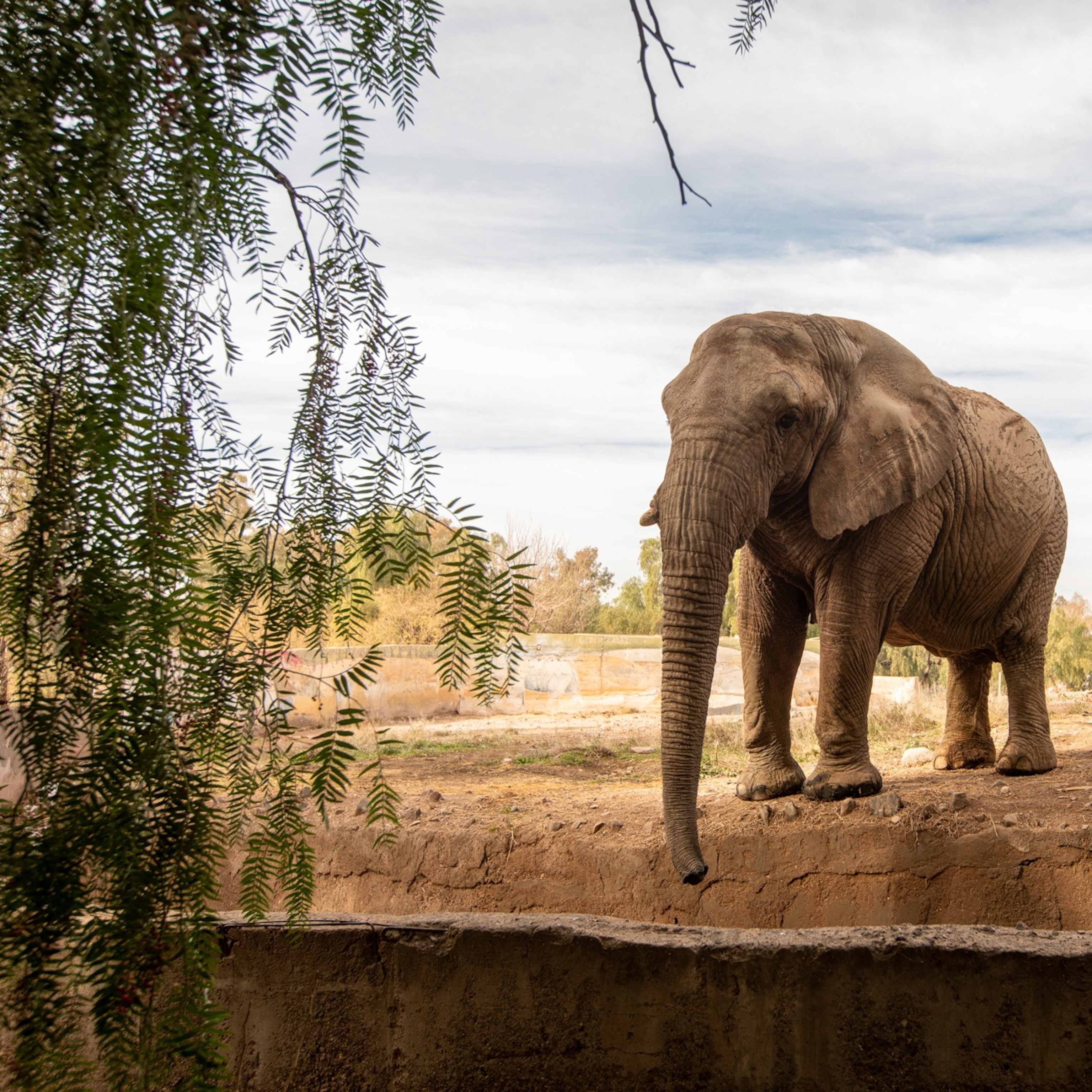
In Hong Kong, Kids Take Action to Stop the Illegal Ivory Trade
Schoolchildren are working together to raise awareness of the toll of the illegal ivory trade.
Part of our weekly "In Focus" series—stepping back, looking closer.
Hong Kong schoolchildren are transforming attitudes about elephant ivory through small actions that are having a big impact.
Hong Kong is at the heart of the ivory black market. Its bustling ports are a major entry point for smuggled ivory shipped from Africa to Asia. In recent years officials have seized huge amounts of ivory: 3.4 tons in 2011, 5.6 tons in 2012, and about 7 tons in the first ten months of 2013.
Now, kids in Hong Kong are using school projects, letter-writing campaigns, petitions, and protests to educate their peers and parents about the true origins of decorative ivory. As a result, they're helping change habits and policies.
Meet Nellie Shute
When Nellie Shute, a 12-year-old at the Hong Kong International School, read articles about the ivory confiscations, she was horrified by how many elephants must have been killed. She did a school project on it, and when she presented her work, her classmates too were shocked. They promised to tell their parents, many of whom owned things made with ivory.
"I knew I'd made a difference, even though it was only a small number of kids," Shute said. "And I knew I had to do more to spread the 'no to ivory' message."
So Shute contacted Elephant Voices, a Kenya-based NGO cofounded by Joyce Poole. When Elephant Voices shared her letter on their Facebook page, Shute was overwhelmed by the more than 600 people who commented and themselves shared it.
Determined to do more, she created and sold elephant gift cards, raising $250, which she donated for the care of an elephant orphan at the David Sheldrick Wildlife Trust in Kenya.

Education: The Wrong Kind
The Hong Kong government often displays confiscated ivory at schools and libraries for "educational" purposes. Yet Shute believes the displays are counterproductive.
"My school was given the tusks to educate students," she said. "But it wasn't doing that at all. Actually, it was reinforcing the idea that it's acceptable to display ivory as artwork. Kids were walking past and saying, 'Wow, that's so cool.' It wasn't cool at all. An elephant was killed and had its face ripped off so that those tusks could be there."
Shute wrote to her principal explaining how she felt. She was nervous but heartened by his response. He said the school hadn't thought about it that way and that she was right.
He agreed to send the ivory back to the government, and when it was returned last December, the shipment included a petition organized by Shute with more than 500 signatures from students and teachers explaining why the school didn't want the ivory and why the government should go a step further and destroy its entire ivory stockpile.
Christina Seigrist and Lucy Skrine
Christina Seigrist, a nine-year-old at the Chinese International School in Hong Kong, learned what was happening to elephants from her parents and their friends, who work in conservation.
She was encouraged to act by her school's theme, "Let's make the world a better place," and by her involvement in the Jane Goodall Institute's Roots and Shoots program.
"I was really worried that if we don't do anything, I will not be able to see elephants in real life when I grow up," Seigrist said.
Seigrist's friend, Lucy Lan Skrine, an 11-year-old at the Independent Schools Foundation Academy, had watched a National Geographic documentary on rhino poaching and later discovered that elephants are poached too.
"This really angered me, having met an elephant up close in Thailand," Skrine said. "Knowing these friendly, harmless animals could be extinct made me want to help."
In September 2013 the two girls joined with Nellie Shute to form the Elephant Angels.

Angel Power
On January 22, the Elephant Angels delivered a petition to the Hong Kong government advocating destruction of its ivory stockpile. They had garnered more than 18,000 signatures, nearly double their goal of 10,000.
On January 23, the Hong Kong government announced its intention to destroy 95 percent (28 tons) of its almost 30-ton ivory stockpile. Slated for May 15, this will be the world's largest ivory destruction so far.
Overjoyed, the children sent handmade cards to officials with the words, "Thank you 11,000 times" (the number of dead elephants the stockpile represents).
"It's a way of putting their memory to rest," Shute said.
Protesting Ivory Sales
The angels didn't stop there.
"If the government is serious about saving elephants, they shouldn't allow shops to sell ivory at all, because that just encourages demand," Shute said.
Domestic legal ivory sales often provide a cover for illegal ivory. Undercover video footage released on February 12 showed staff at two Chinese Arts & Crafts (H.K.) Ltd. stores telling customers how to illegally smuggle ivory across borders. (A company spokesperson said its ivory crafts were sold legally under relevant laws and noted that Hong Kong's Agriculture, Fisheries and Conservation Department monitors local sales.)
On February 15 the angels staged a protest at one of the stores. Standing in front of a window display of a massive set of tusks, they handed out leaflets and talked to shoppers about the true source of the ivory.
"When we were protesting, people were wondering what was happening, and they stopped and read our posters," Seigrist said. "I speak Chinese, and I was able to talk to kids visiting from mainland China that elephants are killed for their ivory. It was shocking to find out that they thought the tusks just fall off the elephants. They were horrified and immediately told their parents right there not to buy the ivory."
She continued: "There was one old Chinese man on his bicycle. He was looking at the pictures of the killed elephants, then suddenly he fell off his bike and started crying and asking how could anyone do this to an animal. I was so sad to see him crying."
After the protest, the group received many interview requests.
"We were happy with these results because the news, radio, and TV stations have the power to teach more people about the cause," Skrine said.

More Students Join the Fight
On March 15, students at Clearwater Bay School organized their own protest.
Researching the illegal ivory trade for a school project, they'd interviewed Alex Hofford, cofounder of Hong Kong for Elephants and a consultant for WildAid. They'd also visited a Chinese Arts & Crafts store and were concerned about the ivory.
"I don't want to see any type of animal become extinct just because people want money," said Clearwater's Giacomo Faye. "I want the next generation of humans to see them up close and not on their iPad or TV."
Shortly after the protest, the company announced it had "suspended the business of selling ivory products at all [its] branches."
"It goes to show that the power of schoolkids protesting on their doorstep every month was not lost on Chinese Arts & Crafts," Hofford said.
The children were pleased with the result.
"It's one giant leap to stopping the ivory trade," Faye said.
"If it's not in the shops, people can't buy it," Shute added. "If they can't buy it, hopefully they will no longer want it."
The ivory suspension is a potent statement, but it will have little impact on the company's bottom line. Chinese Arts & Crafts represents a small part (perhaps 3 to 5 percent) of the sales of its parent company, China Resources Enterprise, whose core business is food and drinks. Furthermore, because the company sells ivory products on consignment, it can simply return them to the consignee.
Toward a Total Ban
Hong Kong's Elephant Angels are now set on winning a total ban on ivory sales. They've started another petition, which has already garnered thousands of signatures and are planning a protest, on May 14.
After they targeted the second largest ivory retailer in Hong Kong, Wing On Department Store, it announced today that, effective July 7, 2014, it would stop selling ivory. Now they have the third largest, Yue Hwa Chinese Products Emporium, in their sights.
Children around the world can lend their support to this cause, said Christina Seigrist. "I would ask them to share this with many of their friends, and also do a presentation at their school."
"Remember, this is our planet, and these are our animals," Skrine added. "It's up to this generation to save them before they die out."
"Don't be afraid to stand up for what you believe in," Shute advised. "If you do nothing, nothing will change. Our young voices can be very powerful, and people will listen. You just have to speak up!"
If you have stories of children taking action for elephants or other wildlife, please comment here or share on the author's Facebook site.








